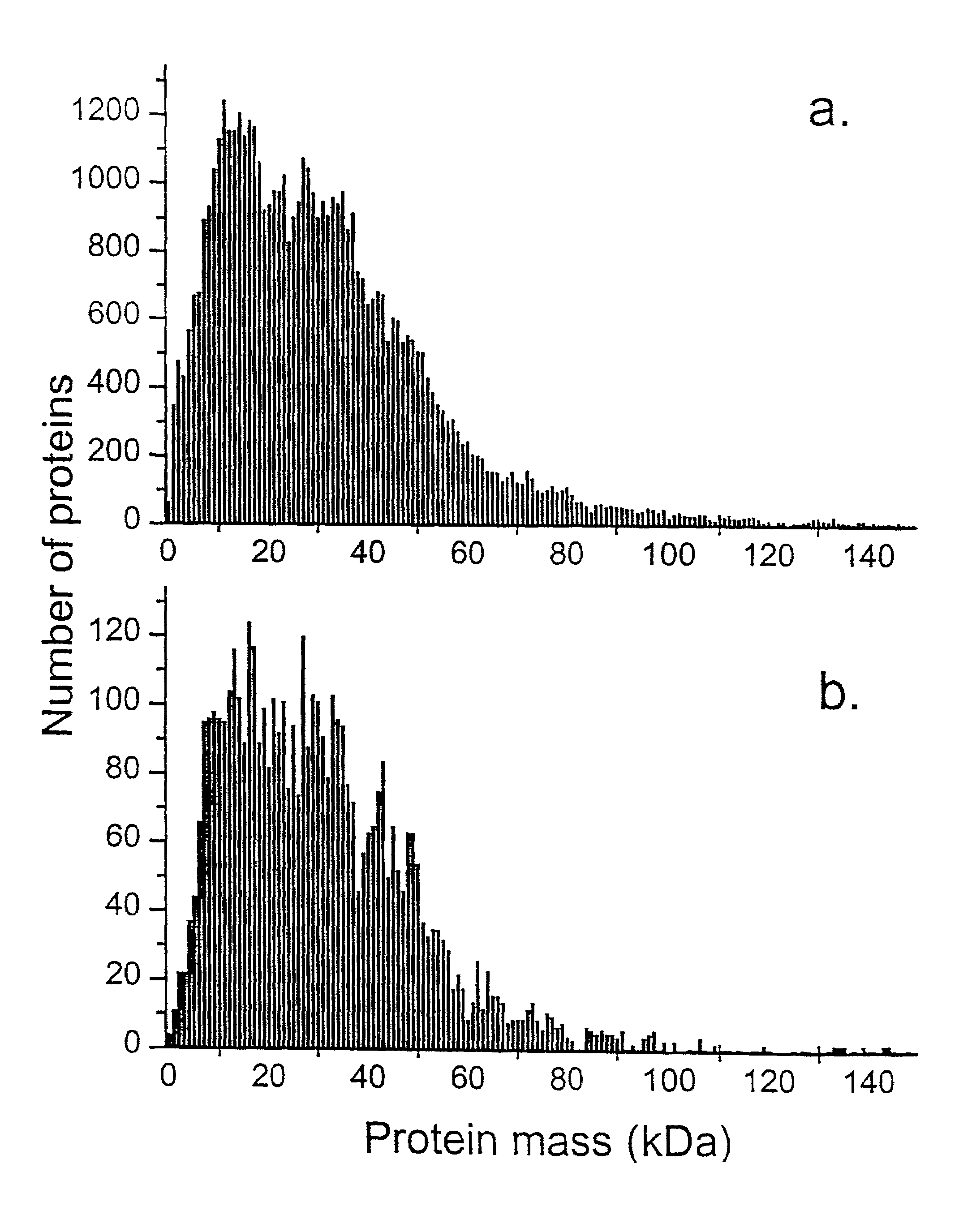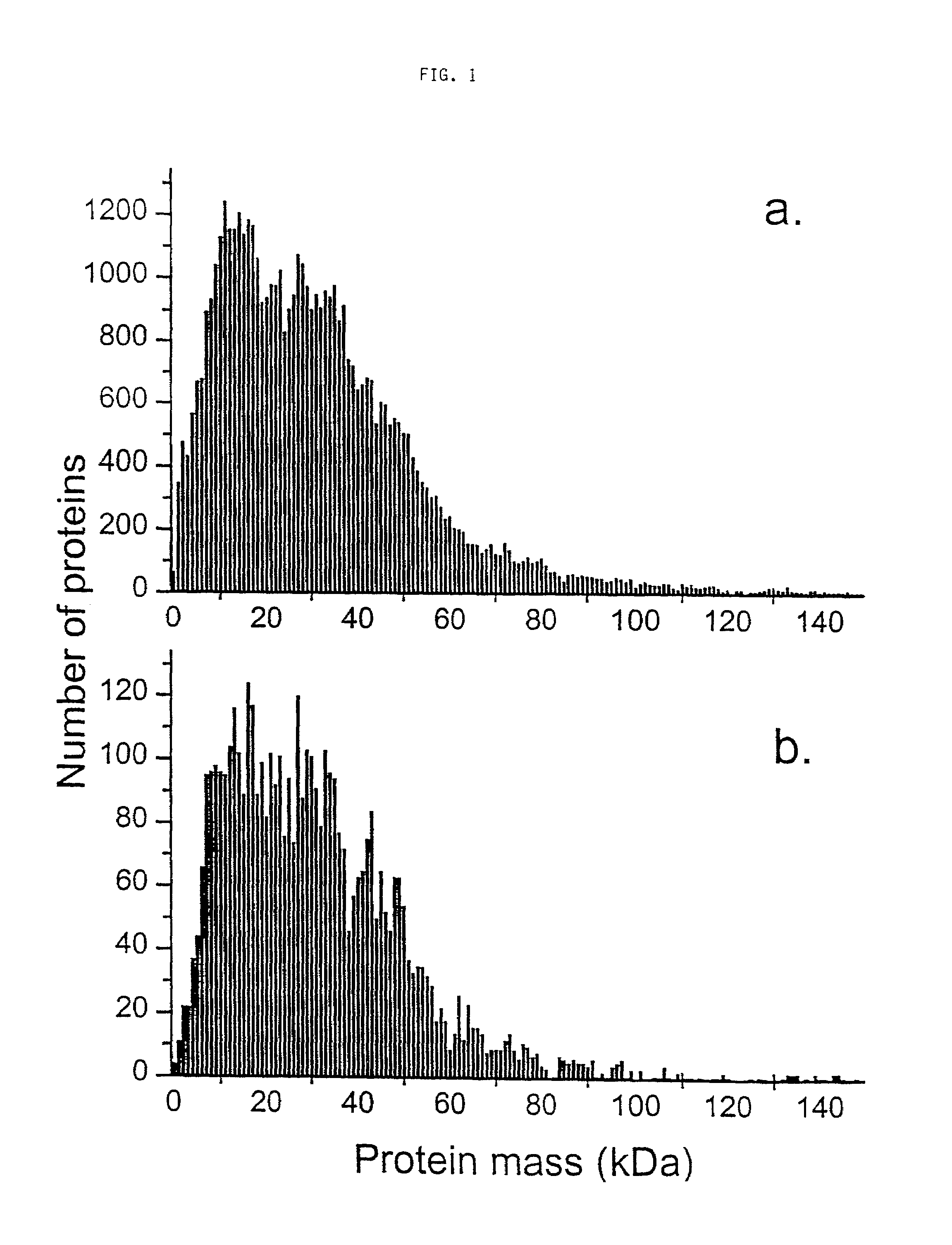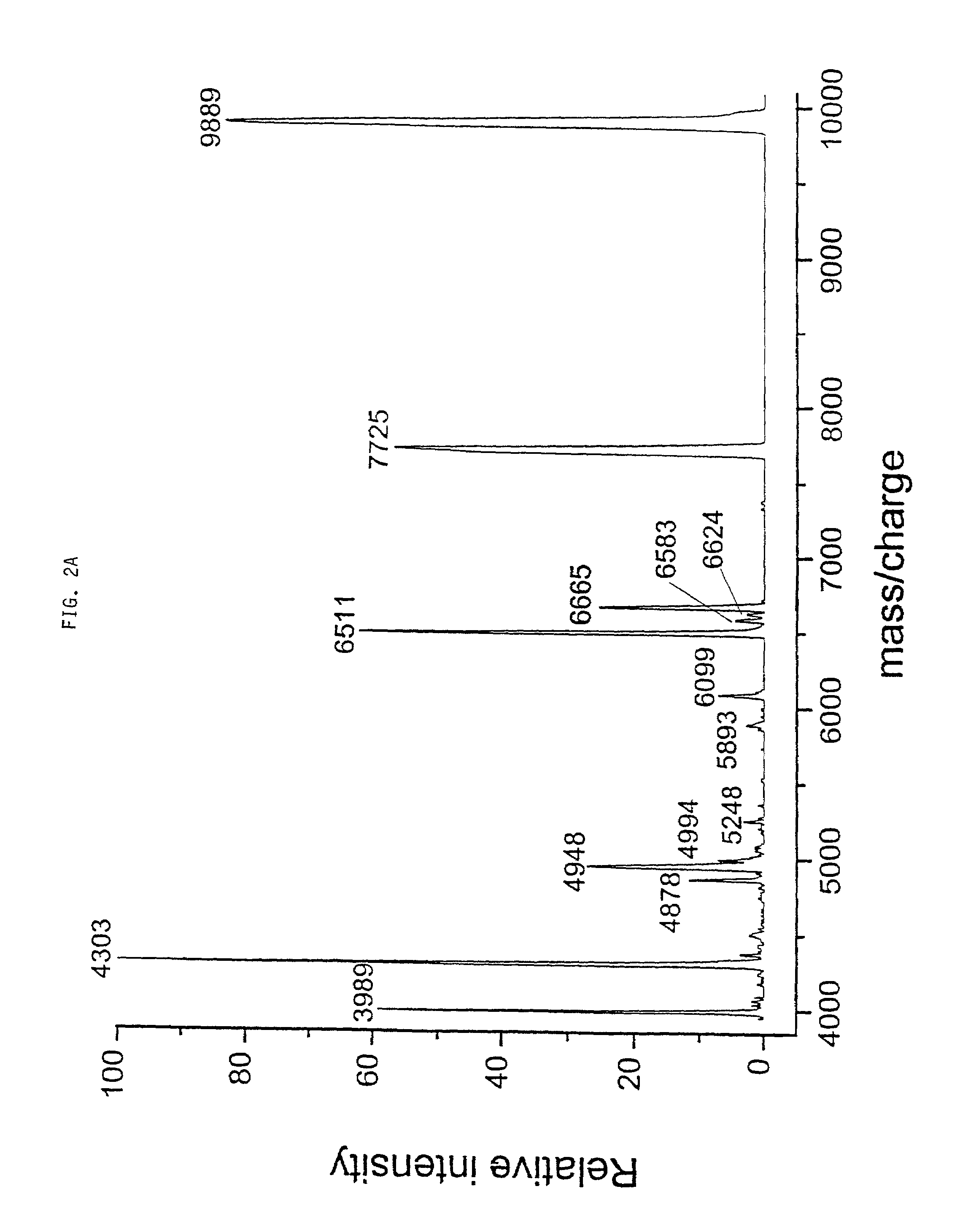Methods for identifying and classifying organisms by mass spectrometry and database searching
a mass spectrometry and database technology, applied in the field of methods for identifying and classifying organisms by mass spectrometry and database searching, can solve problems such as the crisis in the health-care and food industries
- Summary
- Abstract
- Description
- Claims
- Application Information
AI Technical Summary
Benefits of technology
Problems solved by technology
Method used
Image
Examples
examples
[0045]For the purpose of illustrating the feasibility of the method MALDI TOF mass spectrometry was employed. The described database search method is not restricted to that specific instrument combination and sample preparation. Sinapinic acid (SA) or ∝-cyano-4-hydroxycinnamic acid (CHCA) 50 mM in 70:30 CH3CN:H2O, and an equimolar mixture of SA and 4-methoxycinnamic acid (MCA) in 70:30 CH3CN:H2O were used as matrixes. The microorganisms studied were: B. subtilis (strain 168, ATCC# 23857) and E. coli (ATCC#11775). They were grown in-house according to standard procedures; 8 g / l nutrient broth (Difco Labs, Detroit, Mich.) was used as a growth medium, after harvesting the material was centrifuged for 10 min at 104 g and washed with water three times prior to lyophilization for prolonged storage at −10° C. Lyophilized vegetative cells were suspended in a 70:30 solution of CH3CN: 0.1% trifluoroacetic acid at a concentration of 5 mg / ml. B. subtilis suspension (0.2 μl) was deposited on the...
PUM
 Login to View More
Login to View More Abstract
Description
Claims
Application Information
 Login to View More
Login to View More - R&D
- Intellectual Property
- Life Sciences
- Materials
- Tech Scout
- Unparalleled Data Quality
- Higher Quality Content
- 60% Fewer Hallucinations
Browse by: Latest US Patents, China's latest patents, Technical Efficacy Thesaurus, Application Domain, Technology Topic, Popular Technical Reports.
© 2025 PatSnap. All rights reserved.Legal|Privacy policy|Modern Slavery Act Transparency Statement|Sitemap|About US| Contact US: help@patsnap.com



